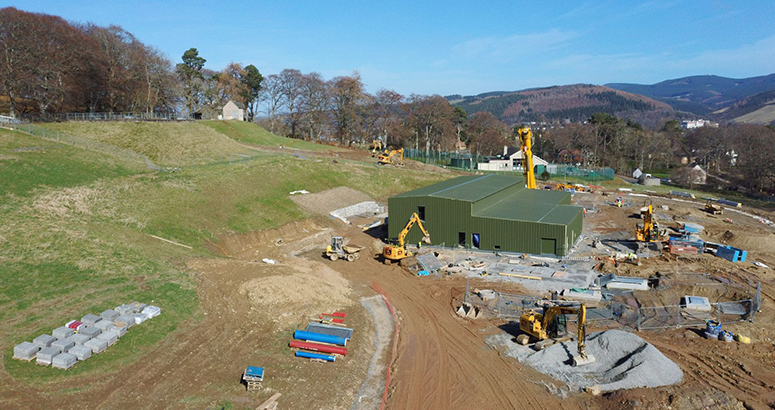Peebles Water Works makes 200 mile Journey from the Highlands
21 June 2022TTUs on the move
The water treatment works were transported by a special lorry from the Highlands to Peebles
The six-month countdown to completion for the new £multimillion Water Treatment Works in Peebles has started and Scottish Water are sharing never seen before images of building taking shape after it’s making a journey from the highlands.
The works, which was constructed off site by Ross-Shire Engineering at their factory in Muir of Ord, was transported nearly 200 miles by road in 17 sections. It is the largest of its kind in the UK and is crammed full of new water treatment technologies.
By building the works off-site, the team have been able to cut down the construction time, reduce the amount of construction traffic through the town and make savings on carbon.
Each of the 17 units, weighing up to 36 tonnes, were built to the largest width that could be transported by road without requiring closures. The units were escorted down the country by police and came through Peebles High Street, turning many heads as they slowly moved through the town.
Bringing loads like this through a historic town like Peebles was not easy. The tight corners tested the manoeuvrability of the specialist lorries to the extreme and the deliveries wouldn’t have been possible without local residents kindly moving their cars before each delivery.
Daniel Sutherland from Ross-Shire Engineering said: “This is the largest transportable treatment works ever built in the UK and getting it to site from our factory up North has been a real logistics challenge. It is brilliant to finally see the building in situ and to start the six-month countdown to it supplying water to the town.”

Six month Countdown
The countdown to the completion of the project has started
The works, which is supplied with water from Megget Reservoir 18km away, houses four CeraMac Membranes which are able to effectively and efficiently treat large volumes of water to the highest standards. These membranes work by pushing the water through tiny holes which are many times smaller than a human hair, helping them to catch the smallest impurities in the water.
Keeping the carbon emissions down has been a key priority for the project team. Rather than removing soil from the site during construction, it has been used to help the works blend into the landscape and has helped to reduce the amount of site traffic. On the building’s roof, 50MWh of solar panels have been installed to help power the site.
John Shaw, Project Manager for the works, said; “The innovative technologies which have gone into this building are very impressive. From the construction methods, to the treatment equipment and the renewables, this has been one of the most exciting projects I have been involved in. I can’t wait to see it up and running.”
Over the next six months, the outside the works will slowly blend into its surroundings through the planting of trees, wildflowers and further landscaping. Inside the building, engineers will be getting the new works ready to seamlessly switch over supply to customers in the area.








